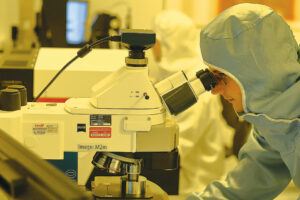
Antimicrobial resistance (AMR) occurs when bacteria, viruses, fungi, and parasites no longer respond to antimicrobial agents. The misuse and overuse of antimicrobials in humans, animals, and plants are the main drivers in the development of drug-resistant pathogens, according to the World Health Organization (WHO). As a result of drug resistance, antibiotics and other antimicrobial agents become ine ff ective and infections become di ff icult or impossible to treat, increasing the risk of disease spread, severe illness and death.
AMR is one of the top global public health and development threats identified by the WHO. The agency estimated that bacterial AMR was directly responsible for 1.27 million global deaths in 2019 and contributed to 4.
95 million deaths. AMR affects countries in all regions and at all income levels. Its drivers and consequences are exacerbated by poverty and inequality, and low- and middle-income countries (LMICs) including the Philippines are most affected.
AMR puts many of the gains of modern medicine at risk. It makes infections harder to treat and makes other medical procedures and treatments —such as surgery, caesarean sections, and cancer chemotherapy — much riskier, warns the WHO. In addition to death and disability, AMR has significant economic costs.
The World Bank estimates that AMR could result in $1 trillion additional healthcare costs by 2050, and $1 trillion to $3.4 trillion gross domestic product (GDP) losses per year by 2030. AMR is a pressing global health and socioeconomic crisis, with significant impacts on human and animal health, food production, and the environment.
Drug-resistant-pathogens pose a threat to everyone, everywhere. Yet, much more can be done to raise public and stakeholder awareness, stressed the WHO. World AMR Awareness Week (WAAW) is celebrated from Nov.
18 to 24 every year to raise awareness and understanding of AMR and promote best practices. This year’s WAAW theme is “Educate. Advocate.
Act now.” — an urgent call to action for the global community to educate stakeholders on AMR, advocate for bold commitments, and take concrete actions in response to AMR. The research-based pharmaceutical industry was among the stakeholders that heard the call to action at the first Global High-Level Ministerial Conference on AMR held in 2016.
In 2017 the industry established the AMR Industry Alliance (AMRIA), one of the largest coalitions to provide sustainable solutions against AMR. The AMRIA is composed of over 100 biopharmaceutical, biotechnology, diagnostic, generic companies, and industry associations established to address AMR-related issues. It is a framework that unites efforts to reduce the development of AMR, invest in R&D, and improve access to the AMR-related technologies.
Ten member companies of the Pharmaceutical and Healthcare Association of the Philippines (PHAP) are part of the AMRIA. In 2020, more than 20 leading pharmaceutical companies stepped up and created the AMR Action Fund to invest nearly $1 billion in antibiotic R&D and support the pipeline for the next few years. Currently the world’s largest public-private partnership supporting the development of new antibiotics, the AMR Action Fund invests in companies that are developing urgently needed therapeutics for priority pathogens and advocate for market reforms to change how society values these lifesaving drugs.
It aims to help launch two to four new antimicrobials within the next decade and create a sustainable ecosystem of investment and innovation to take on one of the biggest global health challenges of our generation. In September 2024 at the fourth High-Level Meeting on AMR, the pharmaceutical industry bared current challenges and reiterated its firm commitment to tackling AMR. The industry’s arsenal of treatments to address resistant infections remains insufficient.
Recent analysis published by the International Federation of Pharmaceutical Manufacturers and Associations (IFPMA) suggests that without additional investment, the decline in the antibiotic pipeline is expected to continue, and contain just 26 treatments — of which only six are in late stages of development — in 10 years’ time. This is compounded by an “AMR brain drain,” where researchers are leaving the field, with an estimated 50% reduction in the workforce since the mid-1990s. This threatens every part of the drug development process, from basic discovery research through clinical testing all the way to regulatory approval and life-cycle management.
What could work to address this is, first, the introduction of effective pull incentives to bring about renewed investment and innovation. Analysis shows that, should this happen, the dwindling pipeline could be boosted to consist of 72 treatments in different stages of clinical research, and 19 new antibiotics approved in 10 years’ time. Second, alongside these measures, ensuring responsible access to new and existing antibiotics is key.
This includes solutions for lower-income settings such as appropriate procurement models and considering the potential of holistic partnership agreements between developers, global health agencies, and appropriate commercial partners. At the next high-level meeting in five years’ time, the test will be to determine whether we have made meaningful progress on the ambitions set out by global stakeholders. Stronger commitment, advocacy and accountability are needed at all levels, and the time to act is now.
Teodoro B. Padilla is the executive director of Pharmaceutical and Healthcare Association of the Philippines, which represents the biopharmaceutical medicines and vaccines industry in the country. Its members are in the forefront of research and development efforts for COVID-19 and other diseases that affect Filipinos.
.














